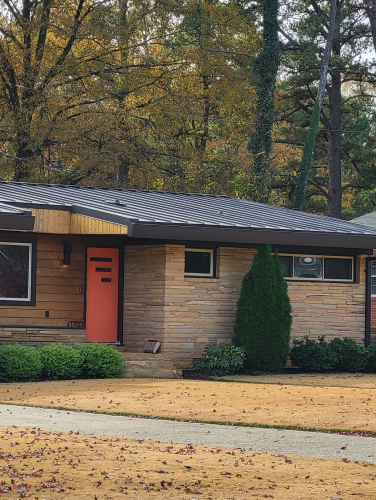
Dr. Reginald Armistice Hawkins House
(ca. 1954)
The home of prominent Charlotte dentist and civil rights advocate Dr. Reginald Armistice Hawkins, whose efforts resulted in the desegregation of many Charlotte institutions.
1703 Madison Ave., Charlotte, NC 28216
Dr. Reginald Armistice Hawkins (1923-2007) was Charlotte's most outspoken civil rights activist during the 1960s. He played a significant role in the desegregation of Charlotte’s airport, upscale restaurants, and Memorial Hospital. He was also a named litigant in Swann v Charlotte-Mecklenburg Board of Education, the 1971 landmark U.S. Supreme Court decision that established court-ordered busing as a tool for school desegregation. As a result of his efforts, Dr. Hawkins’ Madison Avenue home was one of four local civil rights leaders’ homes bombed on November 22, 1965. Fortunately, no one was injured. In 1968, Dr. Hawkins became the first Black candidate for North Carolina governor since Reconstruction.
Property Quick Links
Dr. Hawkins started his lifelong civil rights activism as an undergraduate at Johnson C. Smith University, where he also served as president of the Panhellenic Council, quarterback of the football team, and the school’s first boxing and wrestling champion. His first civil rights campaign – seeking jobs for Black Charlotteans with the U.S. Postal Service – proved successful but by then, he was already enrolled in dental school at Howard University. He returned to Charlotte in 1948 where, with the exception of a stint with the U.S. Army Dental Corps during the Korean War, he practiced dentistry until his 1987 retirement. He and his wife Catherine built this McCrorey Heights house in 1954.
Dr. Hawkins and three of his McCrorey Heights neighbors secured integration of the city’s new airport after staging a 1954 sit-in at the terminal’s segregated restaurant. Meanwhile, he and several Black medical colleagues launched a decades-long battle to desegregate local hospitals, as well as the state’s Medical and Dental Associations. In 1961, after picketing at Charlotte’s Memorial Hospital proved unsuccessful, Dr. Hawkins persuaded U.S. Attorney General Robert Kennedy to intervene, a move that prompted integration of local hospitals for Black doctors and their patients. A May 20, 1963, JCSU student march on City Hall organized by Dr. Hawkins to demand desegregation of the city’s restaurants and movie theaters prompted a unique solution brokered by Charlotte Mayor Stan Brookshire. Individual local Black leaders and members of the all-White Chamber of Commerce paired up 2-by-2 to stage mini-sit-ins at Charlotte’s leading restaurants and theaters. Within two weeks, the success of that desegregation strategy was reported in the New York Times.
The November 1965 bombing of the Hawkins’ Madison Avenue home – which destroyed a rec room at the back of the house – followed a drive-by shooting of the house three months earlier. No one was injured in either incident. Nor was anyone ever arrested for those actions.
Dr. Hawkins’ 1968 gubernatorial campaign received widespread attention, including from Dr. Martin Luther King, Jr. who promised to campaign in North Carolina for Hawkins in April 1968. Due to unexpected violence during a Memphis, Tennessee, sanitation workers strike, however, Dr. King sent a last-minute telegram postponing his North Carolina appearances so that he could help de-escalate the tense situation in Memphis. Three days later, Dr. King was assassinated. Although Dr. Hawkins’ 1968 (and subsequent 1972) gubernatorial campaigns proved unsuccessful, his lifelong civil rights advocacy played a significant role in Charlotte’s history in the mid- to late-twentieth century.

